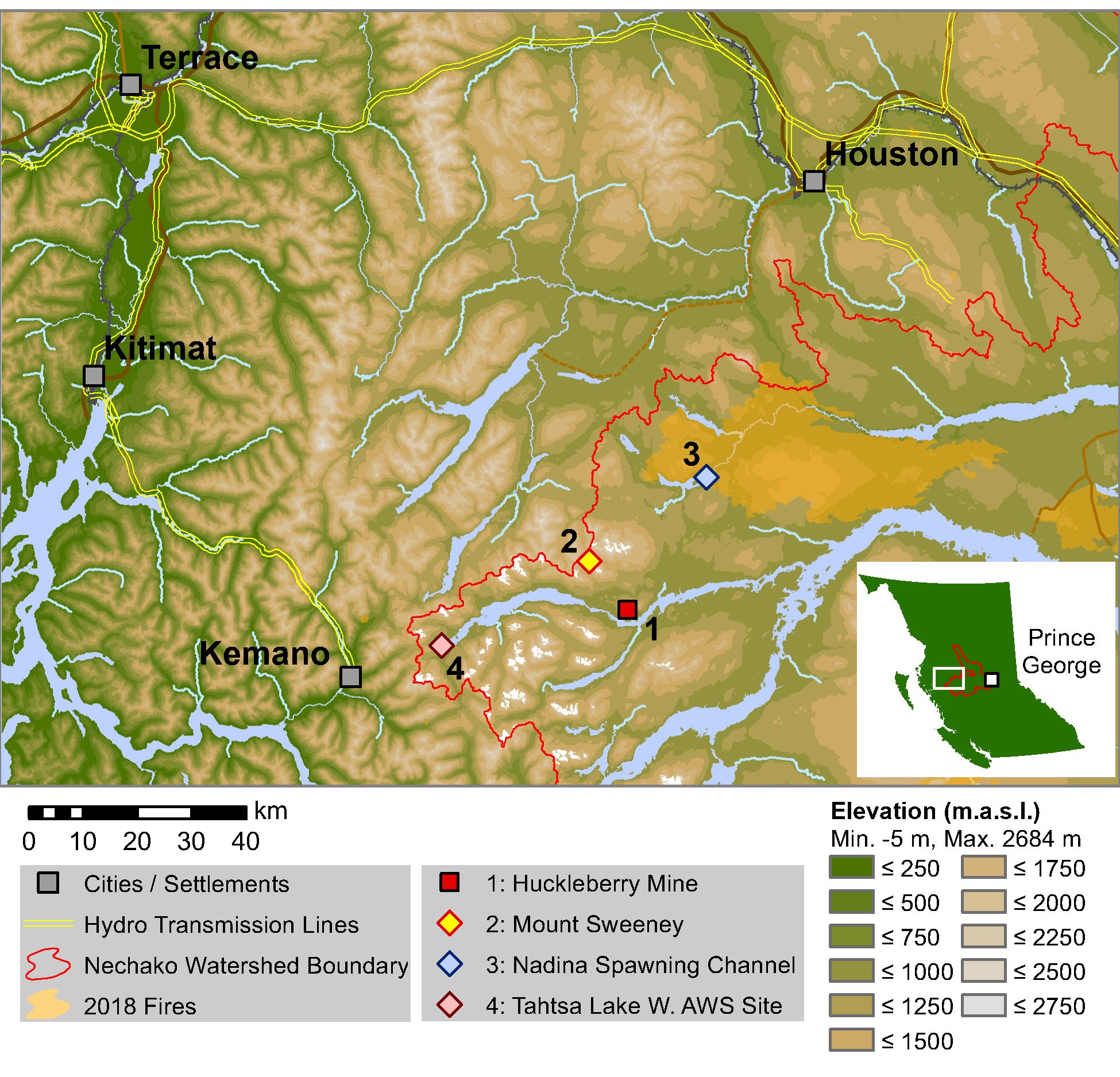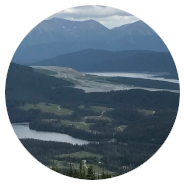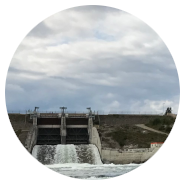Monitoring Extreme Climate and Hydrometeorological Events (MECHE)
Increased duration and intensity of extreme hydrometeorological events is currently affecting numerous locales worldwide (Kharin et al. 2013; Zhang et al. 2017). Northern latitudes have been strongly influenced by climate change to date, and temperatures have risen by approximately 2°C in the vicinity of the upper Nechako Watershed of Central-interior British Columbia (Serreze et al. 2000). Indeed, inflows into the Nechako Reservoir have been highly varied over the past 20 years in comparison to inflows of the 50 years immediately prior.
Year to year variability in precipitation is known to be influenced by a changing climate, and with this variability will come more frequent extreme atmospheric conditions (Kharin et al. 2013; Pendergrass et al. 2017; Zhang et al. 2017). With increased frequency, intensity, and duration of events generated by atmospheric extremes, probability of natural hazards and their accompanying social, industrial, and environmental impacts will increase. This probability is further elevated with the occurrence of compound precipitation events (Zscheischler et al. 2020).
Currently, no known existing hydrometeorological stations or studies are focused on investigating the occurrence of extreme hydrometeorological events on the west-central coast of BC. The Monitoring Extreme Climate and Hydrometeorological Events (MECHE) observatory project aims to monitor extreme hydrometeorological events in this region, serving to fill a key information gap. MECHE is a joint effort between Dr. Stephen Déry at UNBC and Dr. Julie Thériault at UQAM with funding support from the Canada Foundation for Innovation (CFI) and the British Columbia Knowledge Development Fund (BCKDF). The project began in spring 2022 with the installation of a weather station at UNBC's Northwest campus in Terrace, BC and will run over the next decade.
The overarching research goal for MECHE is to better quantify and comprehend extreme climate and weather events in western Canada to generate improved predictive models. Within this overarching goal, the following research themes have been identified:
- Monitoring and predicting compound events associated with atmospheric rivers (ARs).
- Tracking atmospheric and terrestrial pathways of storm-generated precipitation in the upper Nechako Watershed.
- Understanding precipitation formation, distribution and extremes on the western and eastern slopes of the Coast Mountains.
- Identifying extreme climate and weather compound events that trigger major wildfires in north-central BC.
- Generating a warning system of extreme climate and hydrometeorological events for key stakeholders.

Figure 1: The MECHE study area (click for larger version)
Map prepared by
Michael Allchin (mouseover for e-mail address)
For MECHE, an array of state-of-the-art meteorological equipment will be used to monitor atmospheric rivers at five key sites in BC (see Figure 1):
- Huckleberry Mines (primary site);
- Mt. Sweeney (secondary sites);
- Nadina River Spawning Channel and Upper Nadina River Basin (secondary sites);
- Tahtsa Lake and Nechako Reservoir (secondary site);
- UNBC's Northwest campus in Terrace (primary site).
Among the equipment being deployed are two micro rain radars to profile vertical precipitation intensity and velocities, two optical disdrometers to measure precipitation size distribution, and two complete meteorological stations. As well, six tipping bucket rain gauges, and several water temperature sensors are being installed near Mt. Sweeney and the Upper Nadina River Basin. Consult the following website for details on all of the MECHE equipment including what is available for rental.
Please consult the UNBC media release and video for details on this project.







